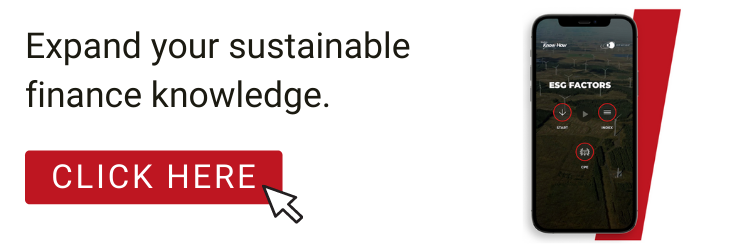What is the Sustainable Finance Disclosure Regulation?
In March 2021, the European Union’s Sustainable Finance Disclosure Regulation (SFDR) came into force.
The SFDR is designed to help institutional asset owners and retail clients understand, compare, and monitor the sustainability characteristics of investment funds by standardizing sustainability disclosures.
Under the SFDR, firms must make both firm and product-level disclosures about the integration of sustainability risks, the consideration of adverse sustainability impacts, the promotion of environmental or social factors, and sustainable investment objectives.
In this article derived from Intuition Know-How’s recently released tutorial Sustainable Finance Disclosure Regulation, four key areas related to this new regulation are explored:
- The background of SFDR
- The objectives of SFDR
- The scope of SFDR
- SFDR in context
The background of SFDR
The Sustainable Finance Disclosure Regulation (SFDR), which was introduced in 2019 and came into effect in March 2021, is part of a new wave of European regulation aimed at building a sustainable economy.
Since 2017, the European Union (EU) has been strengthening its sustainable finance regulation in recognition of the role the financial sector can play in achieving the EU’s sustainable development objectives. The goal of these legislative efforts is to encourage the financial sector to support sustainable activities and to rotate capital away from harmful ones.
Related article: The Biggest Problem with Climate Risk Management in Finance
The SFDR – together with a range of other EU sustainable finance initiatives – is intended to support the European Green Deal, which envisions a European economy that is both climate neutral by 2050 and positive for biodiversity.
To achieve this, the SFDR focuses on disclosures. There is a general belief that enabling end-investors to better understand the impact their investments have on society and the environment through increased transparency will encourage them to shift capital toward activities that are less harmful and potentially even positive.
However, there are two roadblocks to achieving this:
- Sustainable products: Sustainable investment products are products that integrate sustainability or environmental, social, and governance (ESG) considerations.
- Sustainability disclosures: The European Commission (EC) argues that, historically, sustainability disclosures for end-investors, including pension fund trustees, beneficiaries, and retail investors, have been insufficient.

The objectives of SFDR
The SFDR is designed to overcome the roadblocks that prevent investors from accessing the sustainability information they need to make good decisions.
The SFDR has three core aims:
- To improve disclosures so that institutional asset owners and retail clients can understand, compare, and monitor financial products’ and firms’ sustainability characteristics.
- To ensure a level playing field within the EU so that European firms will not be exposed to unfair competition from firms outside the EU.
- To counter greenwashing.
Related article: Sustainable Finance: How is the Regulation Progressing?
The scope of SFDR
The SFDR applies to two categories of financial firms:
- Financial advisors that provide investment advice or insurance advice regarding insurance-based investment products (IBIPs).
- Financial market participants that manufacture and sell financial products and perform portfolio management services.
Examples of firms that fall into these two categories include:
- Asset managers
- Banks
- Financial advisors
- Pension fund providers
- Insurers

SFDR in context
The SFDR is not a standalone piece of legislation but fits within a broader set of EU initiatives and policies structured around the EU Green Deal and the EU Sustainable Finance Action Plan that have been rolled out since about 2015.
EU sustainable finance action plan
The SFDR is one component of the broader 2018 EU Sustainable Finance Action Plan, which aims to support the financial sector’s contribution to a sustainable European economy.
Outside the EU
The SFDR does not explicitly address its relevance to non-EEA market players. However, if a market player does business in the EEA, it will likely have to comply with the regulation.
If you would like to learn more about the SFDR, Intuition recently released an in-depth tutorial on this topic on Know-How, the premier digital learning solution for finance.
If you would like to learn more about Know-How, click the link below.


